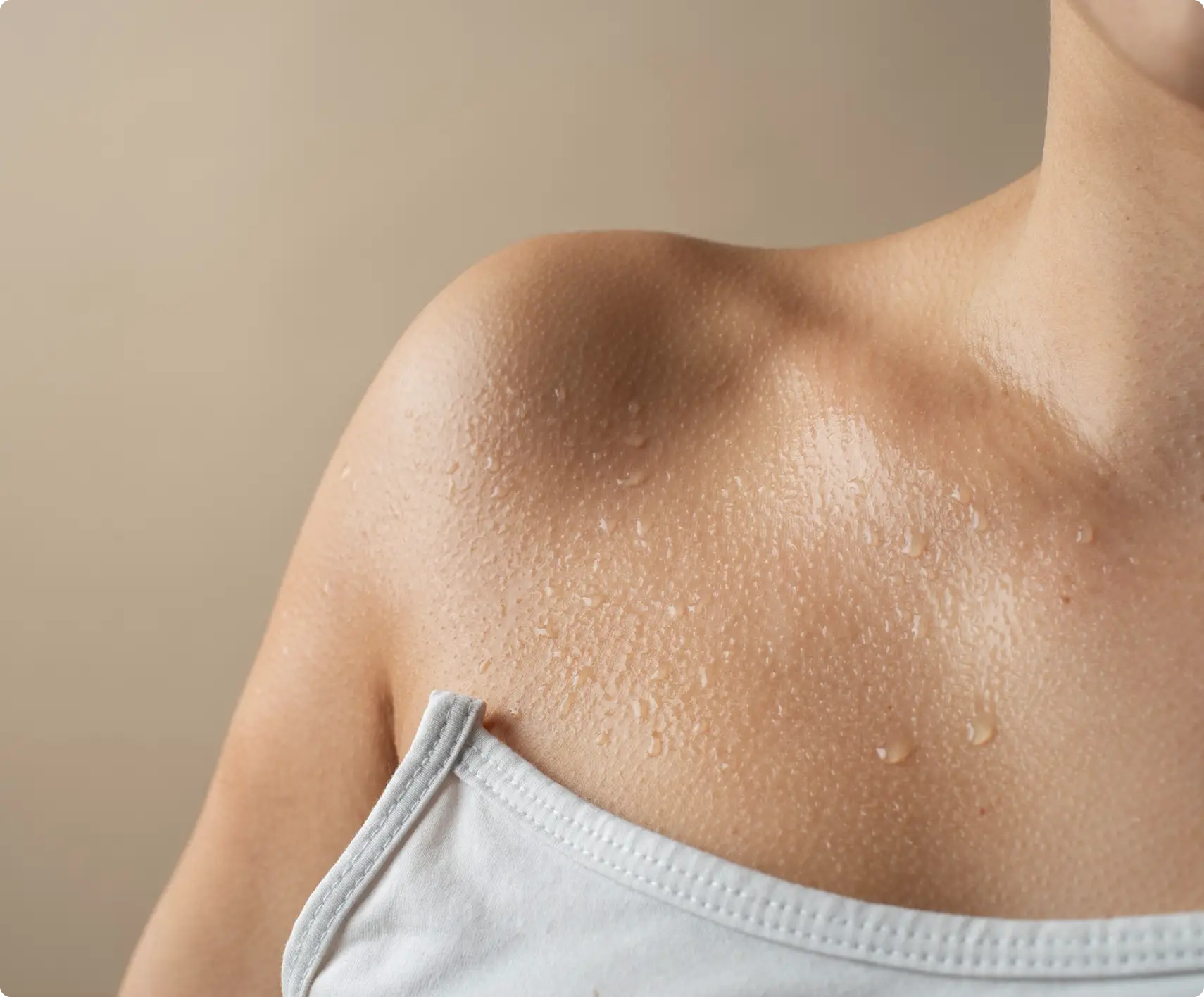Silver Lake’s Popular Healing Center for Excessive Sweat Reduction by Parfaire
Botox Treatment for
Excessive Sweating (Hyperhidrosis)
Don’t let excessive sweating dictate your day! Hyperhidrosis can be frustrating, but Botox offers an effective solution. By targeting nerve signals to the eccrine sweat glands in your underarms, hands, scalp, or feet, Botox reduces sweating and helps you regain control over your comfort and confidence.
How Botox Works for Hyperhidrosis
Tired of dealing with excessive sweating? Botox, widely used for reducing wrinkles, is also FDA-approved for hyperhidrosis, targeting underarms, hands, feet, or face. By injecting Botox into affected areas, it temporarily stops nerve signals from triggering excessive sweat, helping you stay fresh and confident.


What to Expect During Treatment in Silver Lake
Before the procedure, an Iodine Starch Test is conducted to locate the areas with excessive sweat production. This helps us inject Botox precisely where it’s needed for maximum effectiveness.
- A fine-gauge needle is used to administer Botox just under the skin’s surface.
- Multiple small injections are carefully placed throughout the treatment area.
- For additional comfort, a numbing cream or local anesthetic may be applied.
- The process takes about 30 minutes and has little to no downtime.
Typically, we use 50 units of Botox per underarm, but the exact dosage depends on the severity of hyperhidrosis, determined using the Hyperhidrosis Disease Severity Scale. Results typically appear within 5 to 7 days and last between 7 to 8 months, sometimes longer with maintenance treatments.
A Note About Our Iodine Starch Kit Test:
We use a specially formulated powder that reacts with sweat to highlight overactive glands. The powder turns purple when applied, clearly marking the areas that require treatment. This ensures Botox is only injected where necessary, avoiding unnecessary coverage.
We use a specially formulated powder that reacts with sweat to highlight overactive glands. The powder turns purple when applied, clearly marking the areas that require treatment. This ensures Botox is only injected where necessary, avoiding unnecessary coverage.
Benefits of Botox for Excessive Sweating
- Keeps excessive sweating under control for months
- Treats underarms, hands, feet, and scalp effortlessly
- A safe, non-invasive solution with no downtime
- Helps prevent sweat from shifting to other areas
- Restores confidence in social, professional, and personal situations
- More effective than traditional antiperspirants and topical solutions
- Fully FDA-approved for long-term hyperhidrosis relief
- Quick, straightforward procedure with minimal discomfort
- No daily applications or medications required
- Leads to a more comfortable and sweat-free lifestyle


Are You a Candidate?
Botox may be the right choice if:
- You’ve tried antiperspirants and topical treatments without success
- You prefer a non-invasive, non-surgical method to manage excessive sweating
- Your hyperhidrosis is concentrated in areas like the underarms, hands, feet, or scalp
- You’re looking for an effective treatment with long-term results
If your excessive sweating is related to an underlying medical condition, we strongly recommend consulting a healthcare professional to address the primary cause before considering Botox treatment.
Pre-Treatment Guidelines
Before your scheduled visit, please keep in mind:
- Shaving, waxing, or undergoing laser treatments in the area should be avoided at least 24 hours before your appointment
- Maintaining proper hydration while reducing caffeine and alcohol intake is recommended
- If you have allergies or a history of neuromuscular disorders, kindly inform us in advance
Treat Excessive Sweating Today
Take the first step toward freedom from excessive sweating. Botox treatments are available—book a consultation online today. Expert care is accessible near Silver Lake.
*Disclaimer* Any claims of reducing sweat cannot be guaranteed. Individual results will vary and might depend on lifestyle factors such as age, diet, exercise, sun exposure, smoking, and alcohol use.
